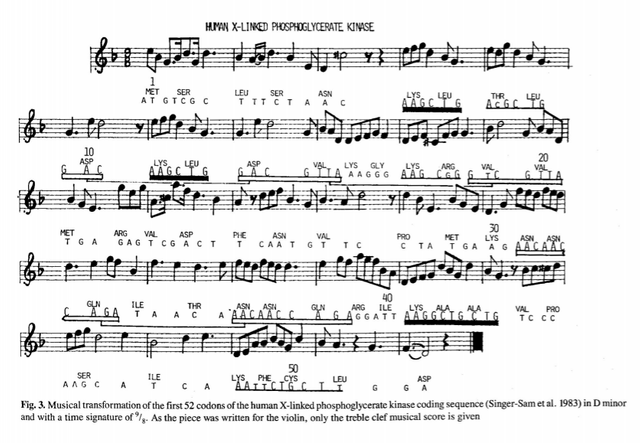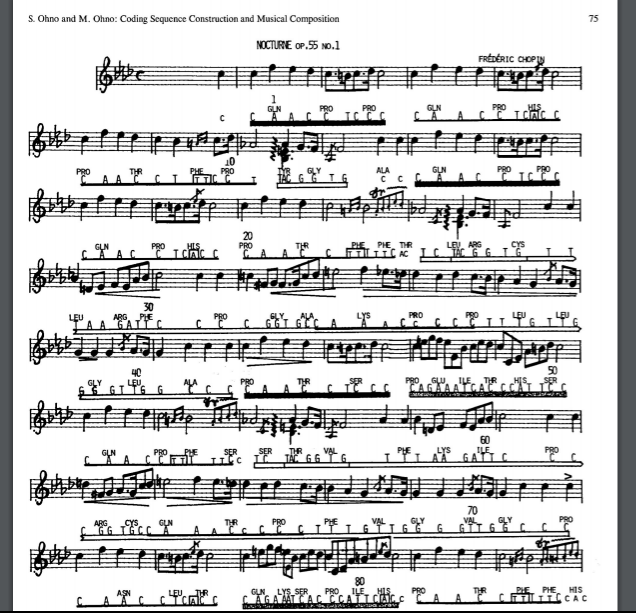Coding Music to Resemble DNA: Life Governing Patterns pt. 3
Find part 1 here
and part 2 here.

Using his established rule set pairing the nucleic acid bases with each note within the octave scale (see part 2 for reference) Dr. Ohno created the above piece of music for violin, which I will play for you in the video below. The first two lines of the above piece are the melodies assigned from the primordial decamer A A G G C T G C T G and its shortened hexamer A A G C T G . Because of their importance and prevalence these were chosen as the principal subjects in the composition. Under the rules for note-base designation, these two principle subjects spit out the notes within a scale in which D is the tonal center. Now why Ohno chose D minor as opposed to D major I am not sure. It could have easily been one or the other based on what sharps or flats were assigned. Which brings me to my next question: what was the rationale for the use of the leading tone C# in some cadences? Was Ohno just following conventional classical composition rules? It seems so.
Octave designation, linear melody, key (to some extent), and time signature seem to be accounted for...but what about rhythm values? At this point the triplet and dotted quarter seems obvious as DNA codons that create the 20 amino acids are composed of three nucleotides, hence the time signature lending itself to being 9/8 (a compound triple meter), but why the half note and quarter note? Why are the rests placed where they are? If you'll notice, there are three letter abbreviations above the nucleic bases in the music. These are amino acids. Here's a handy table of all 20 amino acids and their corresponding DNA codons.
Because tempo was not specified in the study I took some liberties and played it at 80 bpm as it seemed more fitting to play it at a slower tempo. I apologize for the flat notes as my sightreading skills are obviously not very strong BUT I hope you were still able to enjoy that little morsel of "DNA music".
Reversing the Process
This gets more interesting when the above process was reversed so that a piece of music was translated back and appeared strikingly similar to an RNA code sequence using the same rule set described earlier. The music used was a section of Chopin's Nocturne, Op.55 No. 1. For this to make any sense the following also has to be considered.
It is apparent that accidentals were disregarded. Combined with the following criteria and original established rules, the Nocturne retained a 160 codon long reading frame of mouse RNA polymerase II. Sequences recapitulate, the proper recurrences are present and it is eerily similar. There were some differences such as the primordial nonamer of the subunit of the RNA sequence C A A C T C T C recurring only three times instead of the original six. See the transcription below.

Ohno's work, and the ventures of many other scientists and curious minds, make it seem apparent that one hand crafted the fabric of our existence. These life governing patterns set forth this mighty machine and as Ohno believed, these periodicities evident in our creative endeavors and in our very DNA weave our time here and dictate what we are.